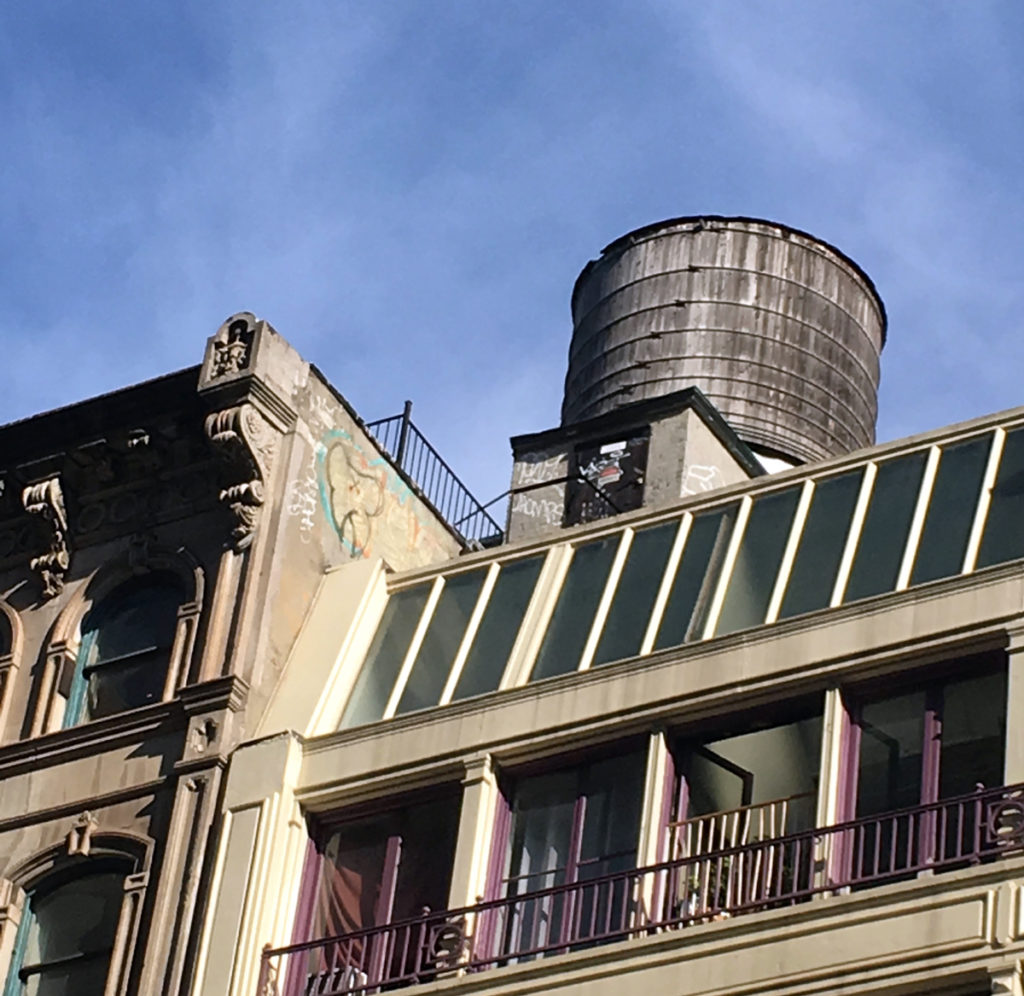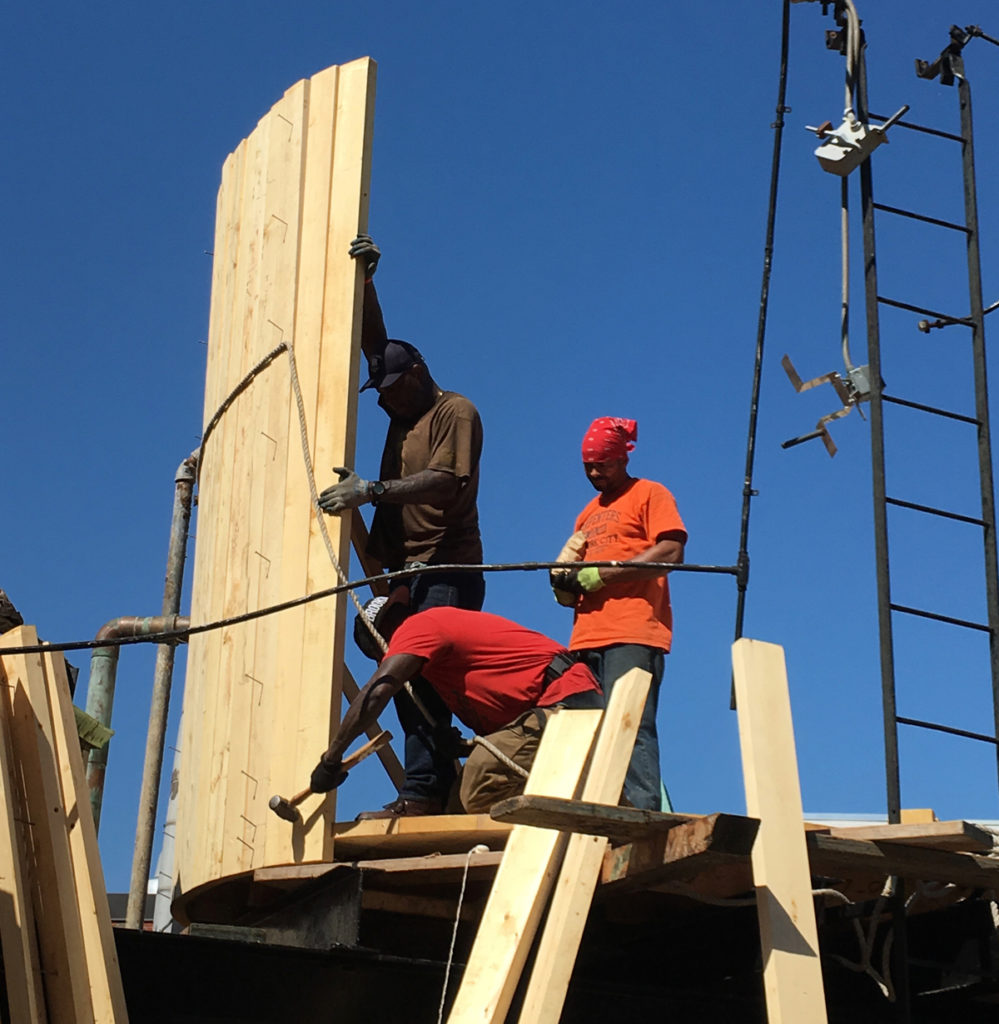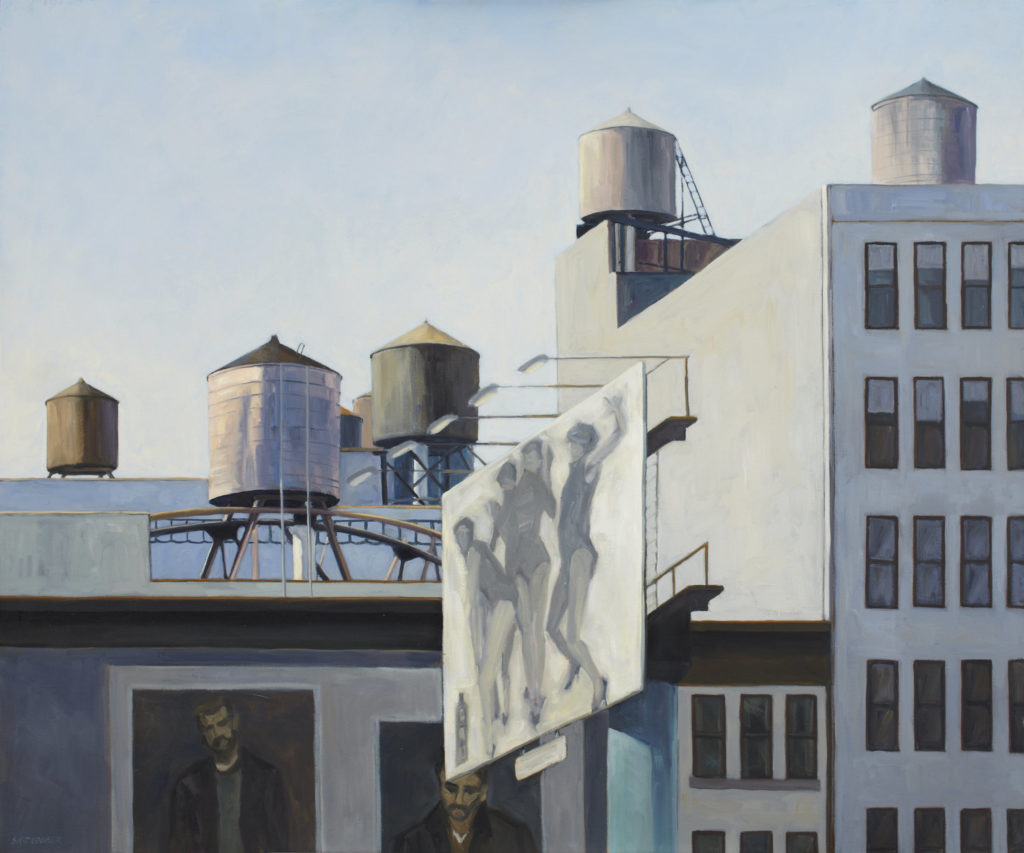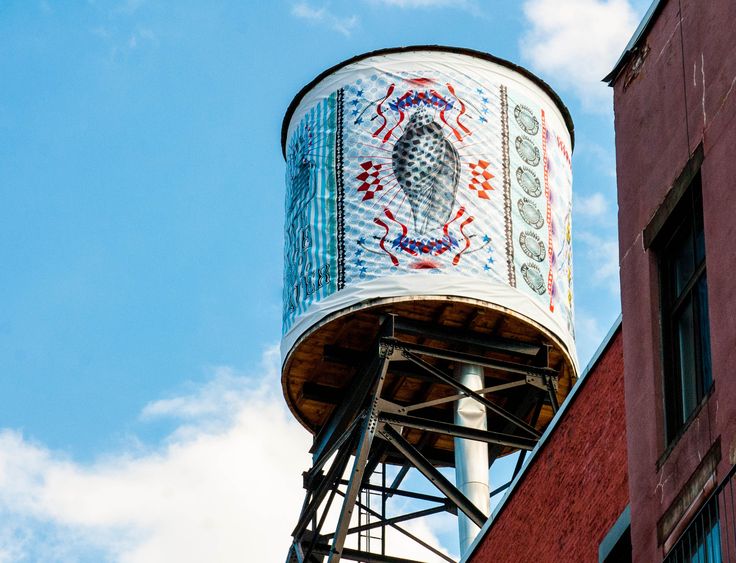Look up. Look way up! Although they may look like remnants from New York’s past, 99% of the water towers in SoHo, including those along SoHo Broadway, are still in use and they are still being manufactured locally by two New York City companies that fabricate and maintain these cherished gems from SoHo’s skyline.
Beginning in the 19th century, as buildings grew taller (than six stories) and especially after Elisha Otis invented the safety elevator (the first one was in SoHo Broadway’s Haughwout Building), the city needed a way to get water to the higher floors of buildings. Originally made from Redwood, the tanks are now built from cedar planks.

A water tower on SoHo Broadway
When first introduced, they were used solely to provide everyday water for drinking and bathing to the occupants of the building. After the tragic 1911 Triangle Shirtwaist Factory fire, where 146 workers died due to lack of means of egress and sprinkler systems, laws were put in place that required buildings to install fire safety measures. The bottom 40% of the water in a tank is now saved for fire protection and the rest is for domestic use. A typical tank refills 3 or 4 times per day when a float triggers a pump to bring up more water when the tank is about half full. A pipe that runs from the upper half of the tank into the building’s plumbing sends water down to the apartments below using gravity for water pressure.

Water towers are taken down and replaced in one day to minimize disruption for building resident
Made necessarily of untreated wood so that no chemicals or sealants will seep into drinking water, the tanks leak when first constructed until water saturates the wood, making it swell and thus closing any gaps between the planks held together with cable. It is now possible to install steel tanks, but they are more expensive and actually require more maintenance than wooden ones. A well maintained wooden tank lasts about 25 years and then requires replacement, thus keeping the water-tower-building business alive.

A painting of water towers along Broadway by Sophie Cooper
Water towers have also served as muses for artists such as Sophie Cooper, who makes oil paintings of New York water towers. In 2014, The Water Tank Project transformed 300 water tanks in New York City, including one on West Broadway and Spring Street by Lorenzo Petrantoni, into public art pieces that aim to increase public awareness of the need for water conservation.

Lorenzo Petrantoni designed water tank on West Broadway and Spring Street commissioned by The Water Tank Project (Photo: Elizabeth Christopher Art ©2014)
When you are walking down Broadway or sitting in your office or loft, keep an eye out for these mainstays of New York’s skyline.
Read more from the Look Back at SoHo Broadway Series by Yukie Ohta
See more SoHo Broadway news & events